Ever tried emailing a huge video and felt like you were shoving an elephant through a dog door? Email providers usually cap attachments at around 25MB, which spells trouble for your multi-gig masterpiece. That means either your email bounces back or you’re stuck with a frosty 'file too large' message — all that content, trapped in digital limbo.
If you try to send a file that exceeds this limit, your email will bounce back, or even worse, the platform could automatically compress your video in a way that distorts it and ruins the quality—all your hard work, down the digital drain.
Luckily, there are multiple quick and easy ways to compress video files for email. We’ll take you step by step through four different video compression and conversion methods so you can choose the most convenient option for you.
Why compress video files for email?
Uncompressed video and audio files are quite large; a typical uncompressed video file is around 5 megabytes per frame, which could add up to many gigabytes in total.
Compressing audio and videos reduces the file size without compromising quality. This makes them easier to upload to a cloud or storage service or share via email because they require less bandwidth to transfer. Compressed video files also require less storage space and take up less room on a cloud, computer, hard drive, or other device.
Sending uncompressed videos can cause a lot of issues, including delayed transfer times, email errors, and playback issues.
4 methods to compress a video for email
Learning the different ways to compress a video to send via email will help you know which method to use and when.
1. Create a ZIP file
Creating a compressed ZIP file is convenient when sending videos or multiple files.
To create a ZIP file on a Mac:
- Locate the file(s) you want to share via email
- Right-click on the file or folder
- Click “Compress (file name)”
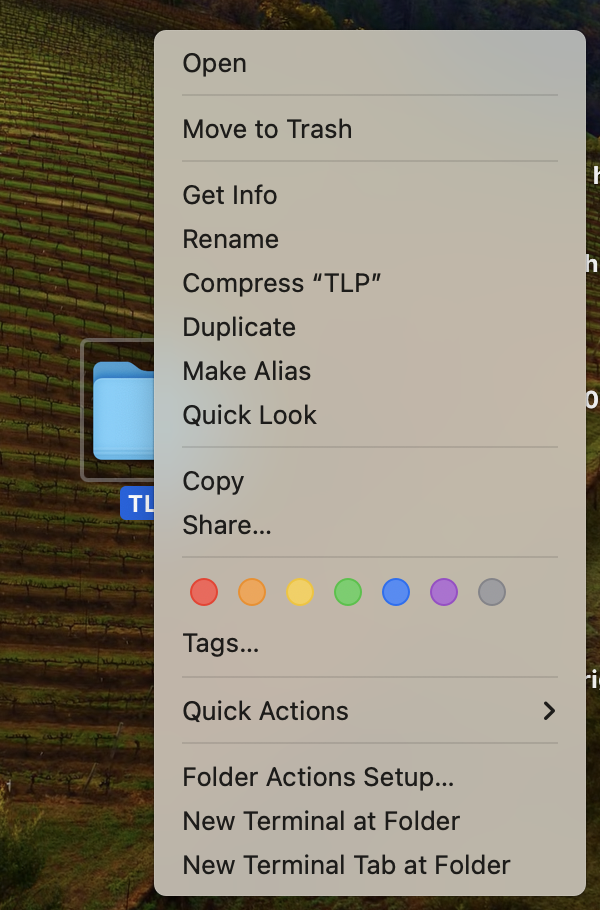 |
You can then locate your file and attach the compressed ZIP file to your email.
To create a zip file on a PC:
- Locate the file(s) you want to send/compress
- Right-click on the file/folder
- In the drop-down menu, hover over “Send to”
- Select “Compressed ZIP folder”
2. Use Descript’s video compressor tools
Creating a ZIP file is a convenient solution, but sometimes your videos may still be too large to email. You can use tools like Descript’s Online Video Compressor or MP4 File Compressor. If you’d rather not download software at all, you can also try a free online compressor — just upload and shrink your videos right in your browser.
Descript’s Online Video Compressor lets you easily compress a video under 8 MB, a standard file size limit for commonly used platforms like Discord.
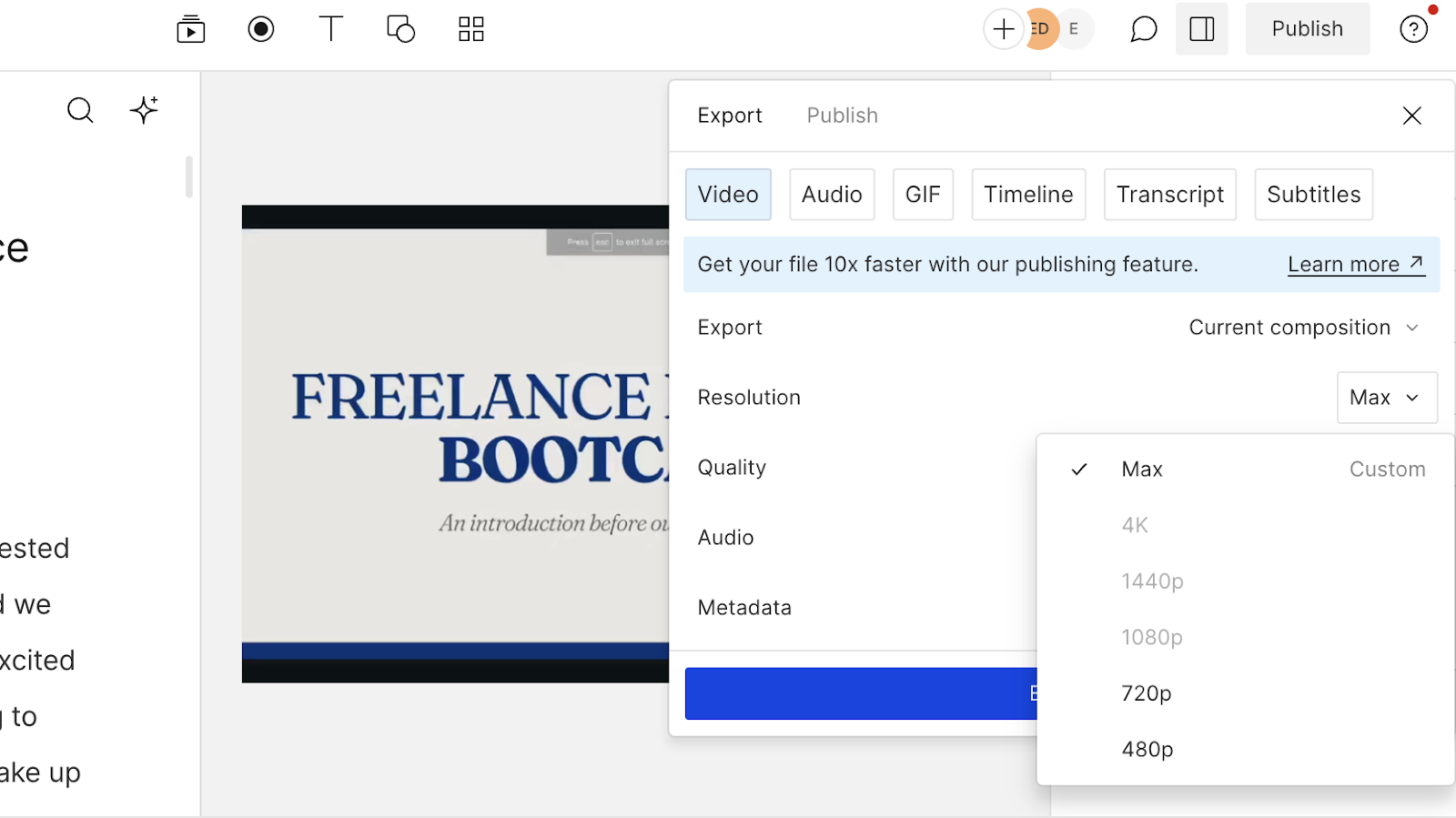 |
To compress your video file, follow this three-step process:
Step 1: Start by importing the video into a project in Descript. The online video converter supports multiple common file types, including MP4, MOV, AVI, MPEG, HDR, and more.
Step 2: Pick an export option based on size, type, and quality requirements. Options include exporting as several smaller files, converting to MP4, and lowering the resolution. You can also bypass the email attachment process entirely by creating a shareable web link.
Step 3: When your video is ready to compress, click the “Share” button and select “Export.”
Step 4: Now that you have your compressed video file, you can send it via email or upload it to social media platforms like TikTok, YouTube, or Instagram. You can also share the page that hosts your video. The recipient will see an embedded video player and a download button.
💡 TIP: Before you crush that file down, take a sec to trim any awkward silences or flubbed lines — your future viewers will thank you. Cutting a bit off the runtime also shrinks what you have to compress. And with Descript’s automatic transcription, cleaning up that footage feels more like a quick text edit than a dreaded editing slog.
3. Use a cloud service
Cloud services like Google Drive and Dropbox allow you to easily share large videos or multiple files. A cloud service is an excellent option if you don’t want to take up storage space on your computer or if the recipient has any storage concerns.
Instead of creating and saving a compressed file, you upload your video to the cloud service of your choice and share a link that lets the recipient view or download your video.
Send a video file with Google Drive
If you already use Gmail, you can log in and share videos with your existing account.
If your video file is saved on your computer, you must first upload it to your Google Drive.
Decide where to store the file on your Google Drive and click the “+ New” button.
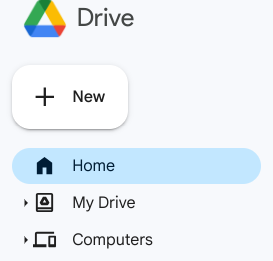 |
In the drop-down menu, select “File upload.” Find the file and click “Open.”
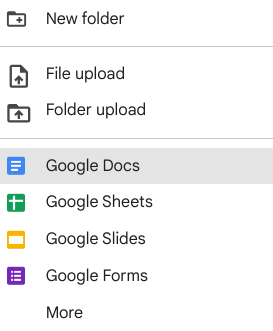 |
Once the file has finished uploading, follow these steps.
- Select the file you want to share
- Click “Share”
- You can type in email addresses for people you want to access your video or choose “Copy Link” at the bottom of the window
- Click “Done”
- Paste the link into your email and send
You can also set access options, including:
- Choose anyone with the link to access the file
- Set role settings like Viewer, Commenter, or Editor.
Sending a video file using Dropbox
 |
You’ll need a Dropbox account to use the platform. You can create a new account or log in via Google.
With the free Basic plan, you can get up to 2 GB of storage for a single user.
To upload videos, you can use the drag-and-drop feature or hit the blue “Upload” button.
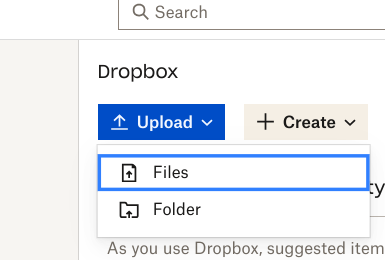 |
- Select file or folder from the drop-down menu
- Locate the file or folder you want to share on your computer
- Click open. A dialog box will pop up. Select copy link
You can paste this link in an email. The recipient can click on the link and view and/or download the file from Dropbox. Alternatively, you can hit the blue “Share” button and enter your recipients email address
You can send a shared link to your video via email, Facebook, Twitter, and other social networks. Your recipient does not need a Dropbox account to view or download your video file(s).
4. Create a video link
Creating a video link is a convenient method to email videos that are too large. With this option, you don’t need to reduce or convert your files.
You can use Descript to create a video link and share your large videos easily. You can publish your video to a Descript page to share with specific people. In your dashboard, click “Publish”, then click the “Open share page” icon to open the page.
 |
Here’s what your video will look like.
 |
To share the page in an email, click the “Copy link” icon. Recipients can download the content and even make comments on your work, which is way faster than exporting a video or audio local file.
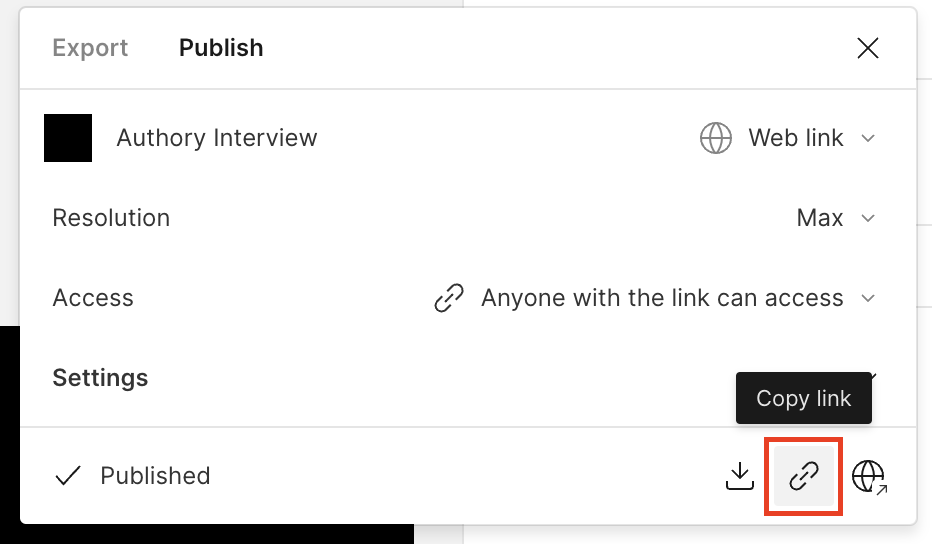 |
How to make a video smaller to share over email—5 tips
Besides the methods we’ve covered, there are other ways to reduce your video size to share via email. For many of these options, you’ll need video editing software.
Many computers have basic built-in options like QuickTime for macOS or Photos on Windows 10 and 11. You can also use third-party options like Descript.
Adjust resolution and bitrate
Video resolution and bitrate are two key factors that influence video quality and size.
Resolution is the number of pixels that make up the video's image. This is measured in horizontal and vertical pixels, like 1920x1080. A higher resolution equals more pixels, which typically leads to a clearer, more detailed picture but a larger file size.
Bitrate measures the amount of video data transmitted per second in units like megabits per second (Mbps). A higher bitrate generally means better video quality but also means a larger file size.
Use video compression software
You can use video compression software like HandBrake, Adobe, or Descript to make a video smaller for email.
- Import or open the video file you want to compress. After the video is loaded, you'll find settings or preferences for output. This is where you can adjust the resolution and bitrate, as mentioned earlier.
- Lower these values to reduce file size. Most software provides presets for various devices and purposes, which can automatically adjust these settings for you. For example, choosing a preset for web use will typically lower the resolution and bitrate suitable for online streaming without much loss of quality.
Trim and edit
By trimming your video to include only the necessary footage and adjusting the export settings for compression, you can significantly reduce the overall file size. To do that, you’ll need to use a video editing program.
You can drag the beginning and end points of the video to trim off parts you don't need, which will directly reduce the file size by cutting out content.
If you want to remove sections in the middle of the video, use the "Cut" or "Split" tool to divide the video into segments. Then select the segments you don't want and delete them. With Descript, you can remove filler words from a transcript, and those edits will appear in your video.
Choose the right format
Another option to make your video smaller is to save or export it in a format that typically yields smaller file sizes. When saving or exporting your video, you can choose between different file formats. For smaller file sizes, consider formats like MP4, which uses the MPEG-4, H.264, or H.265 codec.
Use a container format
Think of a container format like the wrapper that holds the video and audio. Common container formats include MP4, AVI, and MKV. Each container can use different codecs for compressing these streams; the codec and container can affect the size of your video file.
To reduce video file size using a container format, you can repackage the video into a more efficient container and codec combination. For example, the H.264 codec within an MP4 container is known for high compression efficiency, offering a good balance between high quality and file size. More recent codecs like H.265 (HEVC) provide even better compression.
Understanding the compression process is important in today's digital landscape, where communicating through multimedia is commonplace. Using the methods covered in this guide, you can confidently share your creations for personal or professional use. With the right digital tools and know-how, you can get around the most common issues of sending large video files and ensure your message is seen and heard as it was meant to be.
Want to join the thousands of creators already using Descript’s video editor? Take a tour of the dashboard today.
How to compress a video for email—FAQs
What is the best format for emailing videos?
The best format for emailing videos is MP4. This format can be opened on different devices or browsers and there are no issues if you’re sending the file from a Windows computer to a Mac user or an iPhone to an Android device. You can save your video as an MP4 when you render it or compress your video to make it smaller to send or share.
What is the maximum video file size for emailing?
The maximum video file size for emailing is usually 25 MB in Gmail and 20 MB in Outlook or iCloud. If your file is bigger, you have a few options:
- Compress the video using a tool like Descript; try lowering settings like resolution or bitrate.
- Use a cloud service (e.g., Google Drive, Dropbox) and send a shareable link.
- Zip the file before attaching to reduce size.
This way, you can send larger videos without hitting email limits.
What affects the size of a video file?
There are a number of factors that can affect the size of a video file. Resolution and bitrate are the most significant factors. Additional factors that can affect file size include codec and container format, frame rate, audio quality, and video length.
How do I reduce the MB size of a video?
There are a few different ways to reduce the file size of your video. You can try converting your video to a ZIP file, using a video compressor tool like Descript, or converting the file to an MP4. Additional methods include changing the resolution or bitrate (when you export the file or with an editing program) or exporting in a different format. You can also use editing software to trim the length of your video.
Can you compress videos without losing quality?
Yes, you can compress videos without losing quality by using a tool like Descript and exporting in a web-friendly format (e.g., MP4). You can also remove unnecessary clips to shorten the video before exporting. These steps help keep a smaller file size while preserving clarity.



































